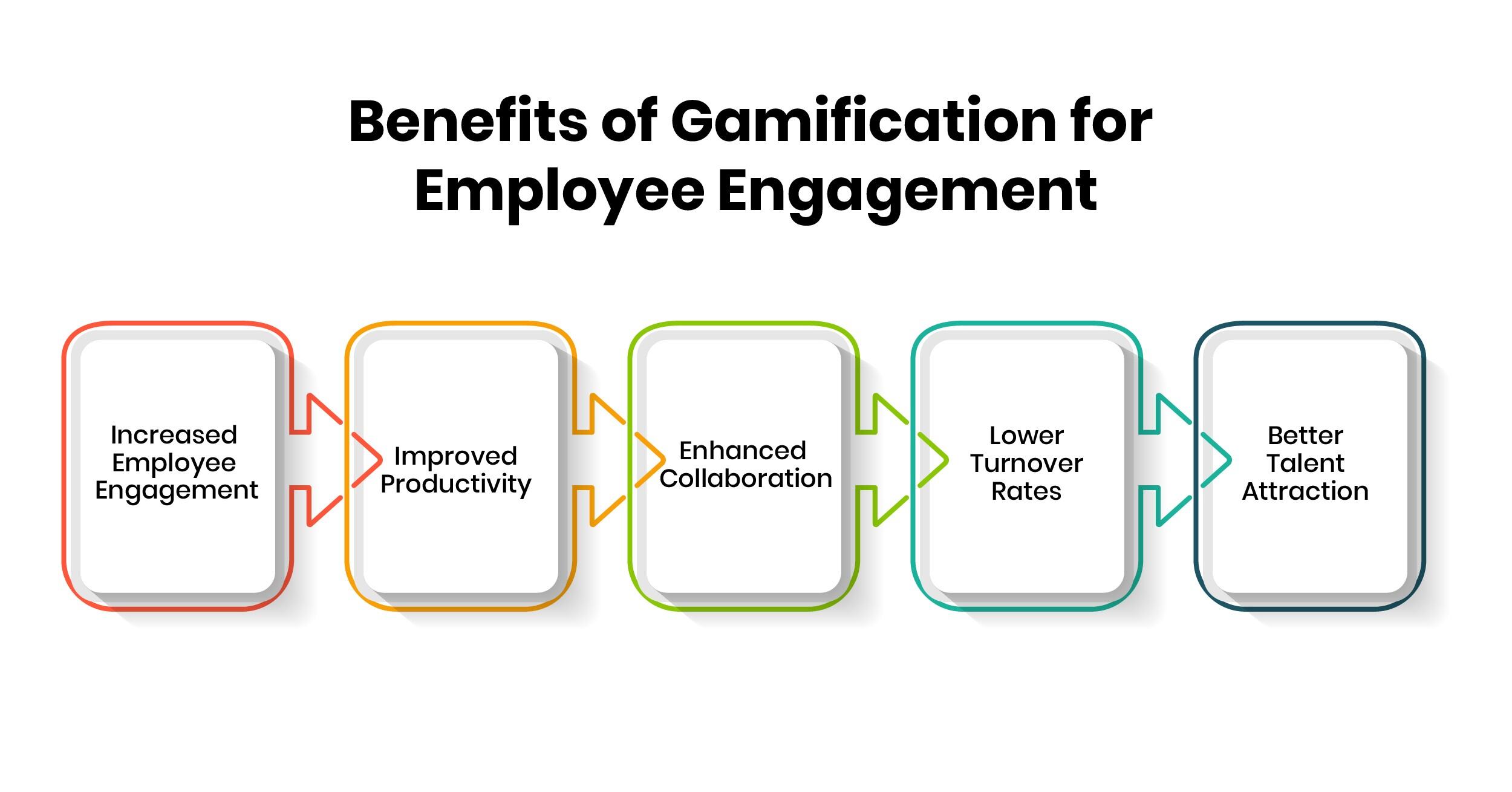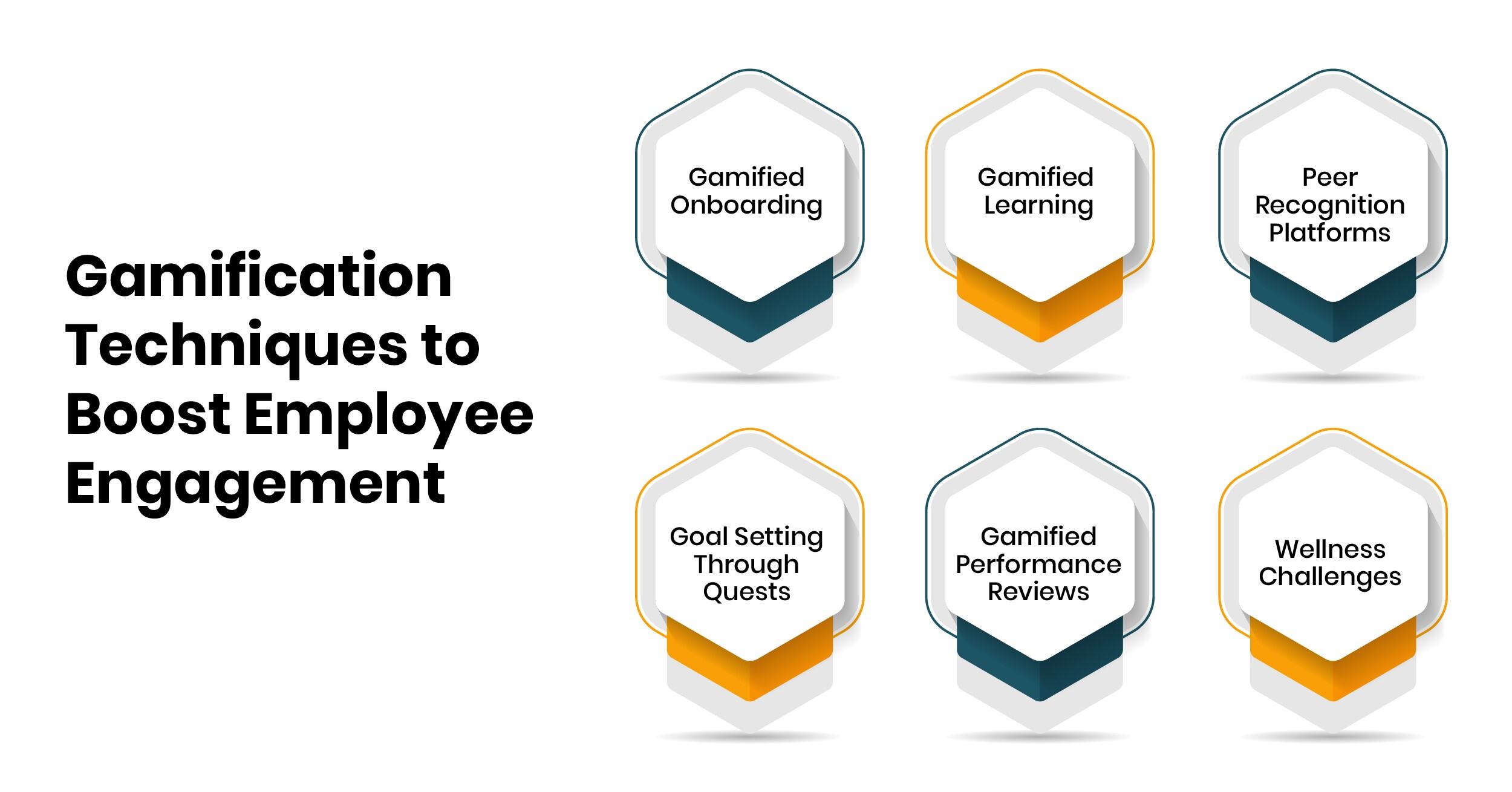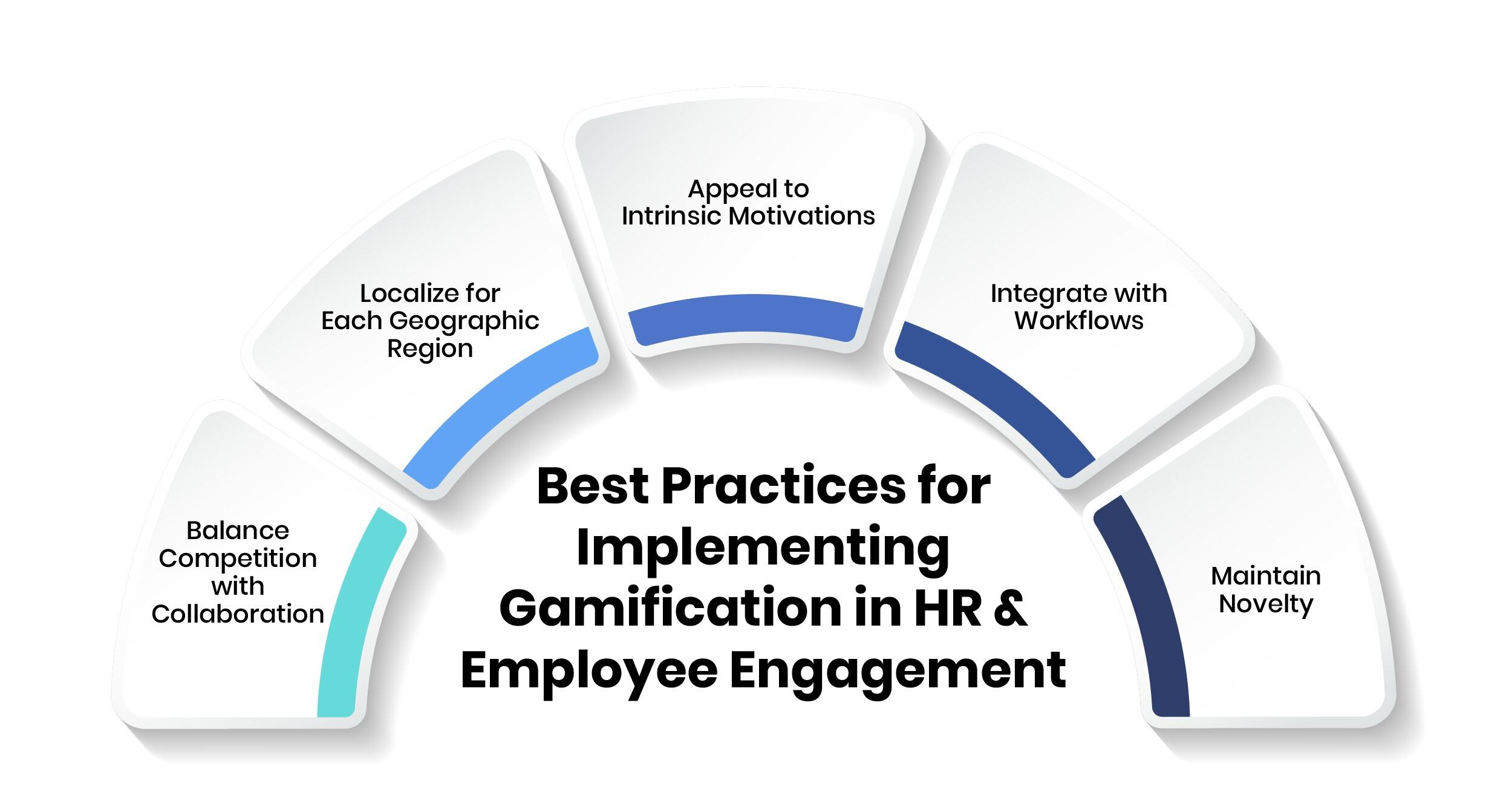Employee disengagement has become a pressing issue for organizations globally. According to the State of the Global Workplace Report, close to 85% of employees feel disengaged at work. Disengaged employees tend to have lower productivity, poor performance, and higher turnover rates. This directly impacts on a company's bottom line. Human resource (HR) departments are now exploring innovative ways to boost employee engagement through gamification.
Gamification refers to the use of game design elements in non-game contexts. It involves applying the psychology behind gaming mechanics to motivate and engage people. Gamification leverages the human innate drive for competition, achievement, status, self-expression, and altruism. It taps into employees' needs for competence, autonomy, and relatedness.
In a workplace context, gamification incorporates game-based motivation techniques to make work more enjoyable and rewarding. It introduces elements like points, badges, leaderboards, challenges, rewards, feedback systems, and storytelling into an organization’s processes, technology, physical environment, and culture. The goal is to drive participation, collaboration, productivity, and loyalty across all levels of the workforce.
A well-designed gamification program can deliver powerful benefits:

Gamification techniques like points, badges, leaderboards, and rewards satisfy employees’ core needs for progress, purpose, development, relatedness and recognition. By integrating game elements into workflows, employees experience a sense of advancement as they unlock new levels, earn badges for achievements, and see their rankings on leaderboards. This gives them clarity on their growth trajectories. Gamified platforms also allow peer recognition and rewards which fulfills employees’ need for appreciation.
All of this results in elevated cognitive, emotional and social engagement from staff. Employees feel invested in their work and connected with the organization’s purpose and culture. Study by TalentLMS shows that gamified work environments can increase employee engagement scores by as much as 79%. This also translates into higher job satisfaction, better retention rates, and improved psychological wellbeing due to lower stress and burnout.
Gamification taps directly into the intrinsic motivations that drive employee behavior. Game elements like real-time feedback, goal setting, rewards, and peer recognition inspire staff to raise productivity levels. Progress bars give employees visibility to their own development areas. This motivates them to upskill faster. Teams also unlock group rewards by completing gamified challenges which incentivizes collaboration.
Appreciation from leaders and colleagues acts as strong positive reinforcement that motivates employees to push boundaries and deliver truly exceptional work.
Gamification promotes greater collaboration and bonding across teams, functions, geographies, and roles. It integrates game elements aimed at fostering engagement, trust and communication within employee groups. For instance, collective challenges stretch teams to work together to win rewards. Organization-wide leaderboards inspire friendly competition between groups driving them to share knowledge and exchange ideas.
Peer recognition gamification gives employees a direct channel to appreciate co-workers from any global location or department. It strengthens cross-functional engagement and trust. Public badges and trophies make achievements visible across the organization, enabling employees to celebrate success stories together. All of this enhances intra-organizational bonding.
Gamification platforms leverage achievement tracking, growth journeys, rewards as well as peer and leadership recognition to fulfill employee aspirations. This fosters deep engagement and loyalty amongst staff as they feel invested in continuing their quests and development paths within the company.
Public displays of success through trophies, leaderboards and recognition also build pride and commitment. Employees feel a sense of purpose and belonging which dramatically reduces attrition rates. This leads to substantial cost savings by minimizing hiring and re-training expenses.
Millennials and Gen Z now comprise a major portion of the global workforce. These generations have grown up playing digital games and expect a sense of playfulness even in their work environments. Gamification delivers an interactive and rewarding employee experience tuned to their preferences.
Elements like real-time feedback, achievement tracking, peer engagement opportunities, and skill development quests make gamified work cultures highly appealing. This gives organizations with gamification programs a competitive edge in attracting and retaining top young talent. The future workforce is digital-first and gamification delivers the cutting-edge employee experience they seek even within traditional companies.
HR managers can leverage various gamification techniques to motivate different segments of their workforces and boost engagement across the employee lifecycle.

Gamified onboarding transforms the usual orientation process into an engaging and rewarding experience for new hires. It typically involves game elements like:
Gamified onboarding results in faster ramp-ups, confident employees who feel valued, and higher engagement starting day one.
2. Gamified Learning
Interactive games and modules make corporate training programs stickier and more impactful by:
Gamified learning drives continued upskilling, higher L&D ROI and nurtures wanted cultures and behaviors.
Peer recognition platforms foster interconnectedness and nurture relationships by allowing employees to easily appreciate colleagues. Typical features include:
Peer platforms inspire intrinsic motivation, connectivity, knowledge sharing and reinforce wanted cultural behaviors.
HR software with embedded game elements can make aligning goals to corporate objectives engaging by:
The interactivity ensures employees stay excited, course-correct early based on feedback, and have enhanced clarity enabling them to put their best selves forward.
Gamification makes performance evaluations engaging by:
The above help transition reviews from backward-looking appraisals to forward-looking engaging meetings that unlock potential.
Typical gamification techniques to drive corporate wellness program participation include:
Applying a game layer on top of traditional wellness initiatives encourages continuous and addictive engagement yielding sustained health outcomes.

HR managers overseeing gamification initiatives must ensure that game elements align tightly with business objectives. The programs must resonate with employees across functions, levels and geographic regions. This requires understanding motivating factors, gathering continuous feedback, and making data-driven optimizations. Following best practices is key:
While individual recognition and rewards can promote healthy competition, focusing solely on leaderboards and personal achievements may not motivate all employees. Some people are demotivated by an overly competitive work environment.
Effective gamification strategies incorporate sufficient team challenges, cooperative quests, and peer appreciation mechanisms alongside individual competitions. This creates a culture of collaboration rather than cutthroat rivalry.
For example, a sales gamification program could balance monthly sales competitions for top performers with quarterly quests requiring inter-departmental cooperation to complete. Teams would need to work together, leverage each other’s strengths, and offer peer recognition to succeed.
Additionally, weighting team performance metrics equally or higher than individual metrics when calculating scores can reinforce group accomplishments. For specific roles like sales where individual results matter, a 70/30 split between team and individual weights may be more suitable.
Multinational companies must account for regional diversity when rolling out gamified platforms. Teams across different countries and cultures may not resonate with certain game elements, themes, or incentives.
HR managers should first test gamification initiatives on a small scale before company-wide implementation. The goal is to gather employee feedback, measure engagement levels, and customize programs for regional sensibilities.
For example, employees in some Asian countries with collectivist cultures tend to prefer cooperative team challenges over individual competitions. Agents at Nordic call centers may not feel motivated by tropical island vacation rewards.
Carefully tailored messaging, locally relevant narratives, language personalization, and culture-aligned rewards demonstrate cultural awareness while increasing adoption across global teams. Periodic spot awards help sustain participant engagement when balanced with larger achievement milestones.
Extrinsic motivators like cash bonuses, gift cards, or vacations undoubtedly provide short-term engagement bursts. However, over long periods, solely relying on external rewards leads to disengagement.
For sustained and self-driven motivation over months and years, effective gamification strategies must incorporate intrinsic triggers related to purpose, mastery, creativity, community, and status.
Programs unlocking job titles, new responsibilities, learning opportunities, and peer recognition leverage internal desires for professional advancement. Enabling teams to select local charities to support satisfies altruistic motivations. Empowering employees to customize avatars and develop creative solutions drives engagement.
While extrinsic rewards have temporary impact, intrinsic incentives create lasting, self-sustaining motivation. Blending both is best but emphasizes non-cash motivators for longevity.
For seamless adoption across teams, gamification mechanics must integrate deeply with existing systems and processes instead of feeling like a separate activity.
HR managers should align gaming elements with performance management solutions, learning management system (LMS) platforms, productivity tools, and HR management system (HRMS) technologies employees already use daily.
Easy-to-access leaderboards, embedded training quests with course assignments on the LMS, one-click badge awards from performance reviews, and recognition notifications within productivity tools make gamification a natural part of workflows.
Conversely, standalone gamification apps requiring separate logins lead to low participation over time due to inconvenience. Integrated platforms with single sign-on and contextual game mechanics have much higher adoption rates.
Without novelty, even the most entertaining games get boring. This holds true for workplace gamification initiatives as well.
HR teams must actively incorporate fresh stories, new team activities and challenges, evolved tiered rewards, and surprise recognition throughout the year to prevent disengagement.
For example, holiday themes invite creativity, team selection for annual strategy projects fuels participation, fierce but time-bound competitions add urgency, mid-year process updates force adaptation, and unexpected spot rewards drive excitement.
While foundational game elements remain consistent, continually layering seasonal themes, unexpected content upgrades, and pauses between intensive challenges sustains employee intrigue and engagement.
Following these guidelines helps HR managers and implementers maximize participation, align closely with business objectives, support localization needs, drive intrinsic motivation, provide convenient embedded experiences, and sustain long-term engagement through an element of surprise and change.
The world’s leading companies across industries are seeing stellar results from gamifying their environments. Adoption of the right gamification techniques allows HR to tap into employees’ deeply ingrained love for growth, achievement and purpose. This drives higher employee engagement, productivity and satisfaction over the long term – delivering a strong competitive advantage.
This website uses cookies to enhance website functionalities and improve your online experience. By browsing this website, you agree to the use of cookies as outlined in our privacy policy .